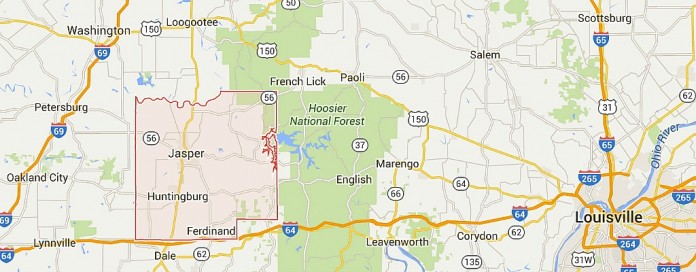***UPDATE***
WASHINGTON — The United States Department of Agriculture’s Animal and Plant Health Inspection Service has now confirmed the presence of H7 avian influenza in nine flocks in southcentral Indiana.
This is a different strain of HPAI than the strains that caused the 2015 outbreak.
APHIS has confirmed the pathogenicity of eight of the nine H7N8 avian influenza detections announced Jan. 16. The turkey flocks have been confirmed as low pathogenic avian influenza, with additional testing ongoing for the ninth flock.
The pathogenicity of a virus refers to its ability to produce disease. Birds with low pathogenic avian influenza (LPAI) often show no signs of infection or only have minor symptoms. HPAI viruses spread quickly and cause high mortality in domestic poultry. H7 LPAI viruses have been known to mutate into HPAI viruses in the past.
These new cases were identified as part of surveillance testing in the control area surrounding the initial highly pathogenic avian influenza (HPAI) case reported in a commercial turkey flock in Dubois County in southcentral Indiana Jan. 15.
“It appears that there was a low pathogenic virus circulating in the poultry population in this area, and that virus likely mutated into a highly pathogenic virus in one flock,” said Dr. John Clifford, USDA Chief Veterinarian. “Through cooperative industry, state and federal efforts, we were able to quickly identify and isolate the highly pathogenic case, and depopulate that flock. Together, we are also working to stop further spread of the LPAI virus, and will continue aggressive testing on additional premises within the expanded control area to ensure any additional cases of either HPAI or LPAI are identified and controlled quickly.”
Turkey outbreak
Samples from the original turkey flock, which experienced increased mortality, were tested at the Indiana Animal Disease Diagnostic Laboratory at Purdue University and confirmed by USDA Jan. 15.
APHIS is working closely with the Indiana State Board of Animal Health on a joint incident response.
Depopulation begun
State officials quarantined the affected premises and depopulation of birds on the premises has already begun. Depopulation prevents the spread of the disease.
Birds from the flock will not enter the food system. There are no known cases of H7N8 infections in humans. As a reminder, the proper handling and cooking of poultry and eggs to an internal temperature of 165˚F kills bacteria and viruses, including HPAI.
As part of existing avian influenza response plans, Federal and state partners are working jointly on additional surveillance and testing in the nearby area.
Producers on alert
Anyone involved with poultry production, from the small backyard to the large commercial producer, should review their biosecurity activities to assure the health of their birds. To facilitate such a review, a biosecurity self-assessment and educational materials can be found at www.uspoultry.org/animal_husbandry/intro.cfm.
In addition to practicing good biosecurity, all bird owners should prevent contact between their birds and wild birds and report sick birds or unusual bird deaths to state/federal officials, either through their state veterinarian or through USDA’s toll-free number at 866-536-7593. Additional information on biosecurity for backyard flocks can be found at http://healthybirds.aphis.usda.gov.
Ohio and Pennsylvania
The Ohio Department of Agriculture has been involved with conference calls with the USDA.
According to a statement from the ODA, the event in Indiana is being watched closely. The department is continuing to monitor the situation and make decisions on any statewide restrictions needs in an effort to protect poultry flocks as the situation unfolds.
Pennsylvania is also reminding poultry producers to be vigilant with their biosecurity measures on their farm with this latest outbreak. Pennsylvania Agriculture Secretary Russell Redding is reminding poultry producers to be vigilant, have a plan and have sound biosecurity measures in place.
In addition to biosecurity standard operating procedures, every farm should have an HPAI flock plan. Flock plans address specifics of depopulation, disposal and cleaning and disinfection methods.
Additional background
Avian influenza (AI) is caused by an influenza type A virus which can infect poultry (such as chickens, turkeys, pheasants, quail, domestic ducks, geese and guinea fowl) and is carried by free flying waterfowl such as ducks, geese and shorebirds.
AI viruses are classified by a combination of two groups of proteins: hemagglutinin or “H” proteins, of which there are 16 (H1–H16), and neuraminidase or “N” proteins, of which there are 9 (N1–N9). Many different combinations of “H” and “N” proteins are possible. Each combination is considered a different subtype, and can be further broken down into different strains.
AI viruses are further classified by their pathogenicity (low or high) — the ability of a particular virus strain to produce disease in domestic chickens.










